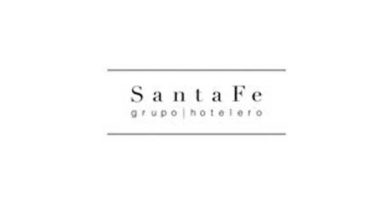New Best Practices for Risk Management One Year After the Las Vegas Shooting
See More
New Best Practices for Risk Management One Year After the Las Vegas Shooting
By Brooks Chase, president, Distinguished Specialty, a division of Distinguished Programs
More than a year ago, the hospitality industry changed forever when gunfire rang out over the Route 91 Harvest Festival in Las Vegas. The horrific mass shooting, conducted from the 32nd floor of the Mandalay Bay Hotel, stunned the nation and reshaped the conversation around risk management, safety and security.
The sad fact is such a tragic event can happen at any property, including resorts. While it’s rare for a resort property to have an event that draws as large a crowd as the Route 91 festival (which attracted an estimated 22,000 attendees), any property that hosts a wedding, banquet, family reunion, conference or get-together of any kind could be a target for a violent act.
Even scarier: most resorts are ill prepared for such an incident. That’s why now is the time to align your property’s security strategy with some emerging best practices. They include:
- Revising “do not disturb” policies. In the past, when a guest put a “do not disturb” placard on a doorknob, it meant hotel staff would not enter the room, no matter how long that guest stayed. Not anymore. Most major chains have implemented new policies that ask a staff member (often a housekeeper) to notify management if a placard if left on a doorknob for more than 12 hours, and to ensure a hotel employee enters each guest room at least once every 24 hours.
These revised policies allow a housekeeper to scan a room, look for anything suspicious, and report it to a manager. And hotels aren’t just changing written policy—they’re following through. For example, when I suffered a stomach ailment on a recent business trip and couldn’t leave my hotel room for nearly 48 hours, I received several visits from hotel staff.
- Replacing self-service with face-to-face interaction. Hotels have realized that the more in-person conversations they facilitate with guests, the better they can recognize dubious behavior and identify potentially bad actors. That’s why some chains removed in-lobby self-service kiosks or smartphone check-in. Instead, these chains ask guest to check in the old-fashioned way—at the front desk with a clerk.
We recommend these two best practices to all resorts. They’re both relatively cost effective (for example, it doesn’t cost any money to ask your existing staff to make sure they enter every room, every day), and they provide an extra layer of security for your guests and staff.
Six additional ways resorts can reduce risk now
Many resorts have limited budgets. Many also have somewhat isolated locations—on a mountainside ski slope, a remote island or on a private beach. But don’t let your resort’s limited funds or far-away GPS coordinates fool you into a false sense of security. Your remote location won’t stop anyone who wants to do harm, and just one violent act will shatter the promise of unlimited worry-free relaxation that you make to your guests.
That’s why we also recommend taking these practical tips to reduce your resort’s risk. Many are relatively low cost and easy to implement:
- Check all doors. Don’t allows guests to leave doors propped open. Remove doorstops as needed. Fix any doors that work improperly. And make sure all doors—even those in the back of the resort—require card access to open.
- Be extra cautious about who can access your property. Foot traffic at many resorts includes guests and locals, such as day-pass skiers at an alpine getaway or boaters on public waters at a lakeside retreat. Make sure your security staff routinely patrols your property and removes anyone who doesn’t belong. Use plastic wristbands to make it clear which guests are permitted to use your facilities, and which ones are not.
- Take advantage of association membership. If you’re a member of an industry group (such as the American Hotel and Lodging Association), ask them for any educational resources they may offer, and get involved in councils or committees that offer risk management support or guidance.
- Develop strong relationships with local law enforcement and nearby resorts. You should already have tight connections with your municipal fire department. Do the same with your local police or sheriff’s office. Let them tour your property and ask them for feedback on current security measures. Ask them what they need to respond quickly in the event of an emergency, and how you can help. Ask if they provide training for staff (such as active shooter drills, something many hotels don’t do, but should).
Also, talk with leaders from neighboring resort and entertainment properties. They may share similar struggles and offer fresh perspective. You may also be able to develop a shared network that interacts with fire and law enforcement to protect all the resorts in your community.
- Develop and share clear emergency response plans. What happens if an act of violence occurs? Who will make an announcement? What will they say? What should guests do—leave through a stairway? Shelter in place? Make sure you have a plan that addresses all these items. This training should be part of your resort’s overall safety plans that also addresses items like earthquakes, hurricanes and other potential disasters. Emergency plans should be designed specifically for your property. And every employee must know them. With hospitality turnover rates averaging more than 70 percent annually, we recommend quarterly staff training to ensure each employee knows his or her specific role.
- Look into additional technology. This will require making investments, but they’re wise ones. First, if you don’t yet have smart locks on all doors, invest in them now. Some properties resist them because they want guests to feel like they’re at home. But that comes with obvious risks. Smart locks will give you an electronic paper trail showing who enters and leaves each room, and when. This information is invaluable when it comes to determining the cause of any crime or negative event.
In addition, review your current fleet of security cameras and look for ways to enhance them. Don’t leave out important areas, such as parking lots or garages where accidents and theft can happen, and where liability is often an issue.
The Las Vegas shooting led to an estimated 2,500 lawsuits and threatened lawsuits against MGM Resorts International, owners of the Mandalay Bay. That doesn’t include the massive reputation and public relations damage. Any act of violence at a resort has the potential to bring a tidal wave of financial loss, negative publicity and endless litigation. That’s why we recommend reviewing your resort’s security measures and implementing these emerging best practices. They can protect your guests, your employees, and your business.
About the Author
Brooks Chase is the president of Distinguished Specialty, a division of Distinguished Programs specializing in the hospitality and real estate industry. Distinguished’s hotel program insures more than 900,000 hotel rooms nationwide and is the longest running in the country. Brooks can be reached at bchase@distinguished.com.



